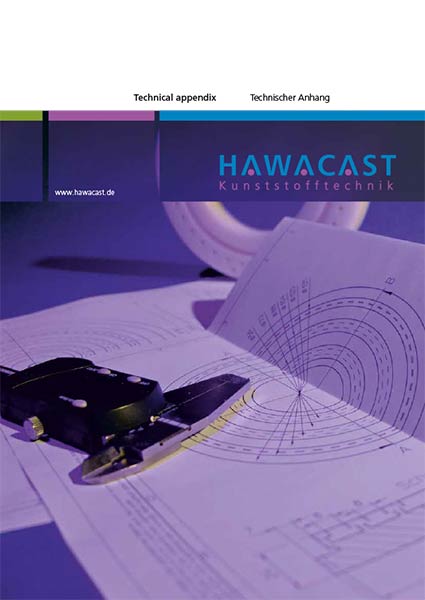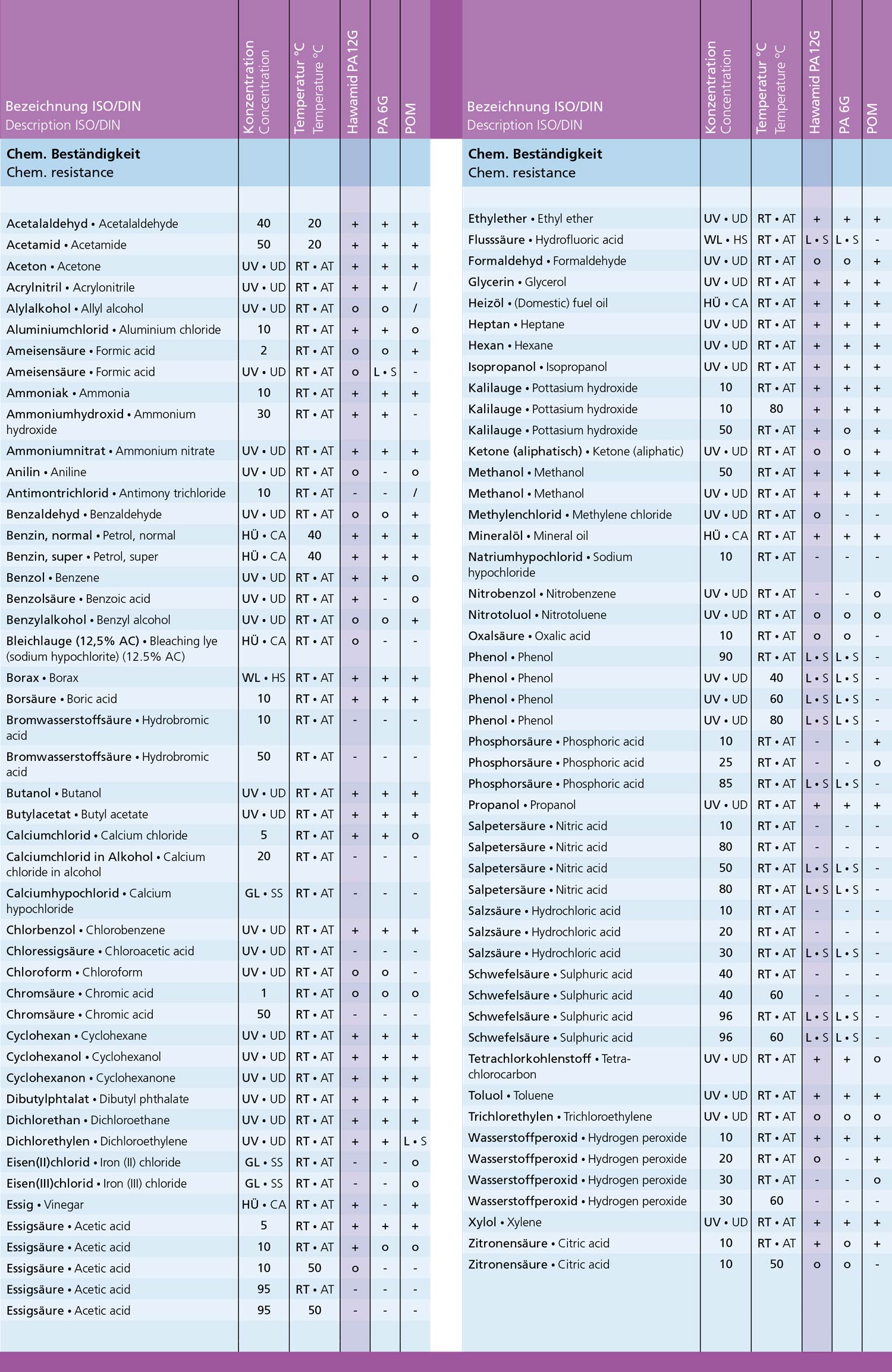Chemical properties
Information on how to use the list “Chemical Resistance”
The information provided on chemical resistance in the following list is based on tests involving specimens that were unexposed to external stress or loads while being subjected to the relevant media. Also included are our experiences we gathered from our practical and often long-standing use of plastics when in contact with these media. Due to the variety of media, the present list represents only an extract of the data available to us. In the event that the medium you use is not included in the list, we will, upon request, be happy to provide you with the information on the resistances of the plastics we supply.
For this reason we cannot guarantee the accuracy of these values. The resistance values listed here are only approximate values and may be considerably affected by factors such as e.g.
- deviating degree of purity of the medium
- deviating concentration of the medium
- different temperatures as those mentioned
- alternating temperatures
- mechanical loading
- part geometries, in particular those that result in thin wall thicknesses or wall thicknesses that differ considerably from each other
- tensions caused by machining
- mixtures containing the various media
- combination of the above-mentioned factors.
Applications must be tested in advance for relevant resistances. In the case of mixtures containing different media, the resistance generally cannot be predicted even if the plastic is resistant to the individual constituents of the mixture. In this case we recommend that a storage test be performed with the relevant constituent in the ambient conditions to be expected. It must be emphasised that parts that are used is areas where two or more media come in direct contact with each other may be subject to additional thermal stress as a result of the reaction heat that is generated.
Despite the grading >stable<, contact with the medium may in individual cases result in changes to the surface such as e.g. deadening or discolouration or, in the case of translucent plastics, opacification. Despite these changes to the surface, however, the resistance is maintained.
The details provided in the list are based on our present state of knowledge and are to be understood as recommendations and approximate values. If in doubt, we recommend that for concrete applications the resistance be tested by means of a storage test performed in the ambient conditions to be expected.




